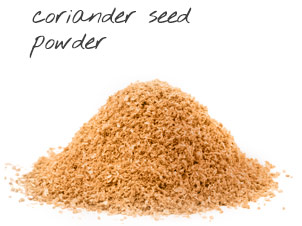![[ Crazy for Cookies: From Cake to Cookie ] ~ from Monterey Bay Spice](images/page/crazyforcookies/side-cake-to-cookie.jpg)
a. accidental sensation
Whether by choice or the generosity of another, more than a few
store-bought, cookie-packed tins have no doubt found their way
into your home, especially during the holiday season. Once the
lid is pried open, nothing says "pick me!" more than the sight
and smell of the sugary confections neatly stacked in papery
cups. More than a compression of flour, sugar and egg, these
snappy little shortbreads represent centuries of culinary
history. They were also "created" by accident when bakers would
test bake a spoonful of cake batter to make sure the oven was
hot enough.
There is evidence that the first cookie-like cakes emerged with
the cultivation of sugar in 7th century Iran, formerly known as
Persia. Consisting of flour, water, eggs and nuts, and flavored
with vanilla and anise, these hard, often ring-shaped wafers,
known as jumbles, were not only convenient, fit-in-the-satchel
energy foods to travel with but could also be stored for months.
As travel and trade spread, Europeans adapted these early
cookies as biscuits (England), buns (Scotland), galletas
(Spain), biscotti (Italy) and keks (Germany). As with language
and art, cookie-baking took off during the Renaissance period.
In fact, Good Queen Bess likely enjoyed the spice cookie recipe
from Goode Huswife's Jewel, the 1596 cookbook penned by Thomas
Dawson:
"Take fine flowre and good Damaske water you must have no other
liqeur but that, then take sweet butter, two or three yolkes of
eggs and a good quantity of Suger, and a few cloves, and mace,
as your Cookes mouth shall serve him, and a lyttle saffron, and
a little Gods good about a spoonful if you put in too much they
shall arise, cutte them in squares lyke unto trenchers, and
pricke them well, and let your oven be well swept and lay them
uppon papers and so set them into the oven. Do not burne them if
they be three or foure days olde they bee the better."
![[ Crazy for Cookies: Colonial Cookies ] ~ from Monterey Bay Spice](images/page/crazyforcookies/side-colonial-cookies.jpg)
b. little cake craze
In the 17th century, what we know as the modern cookie evolved
from a simple butter "koekie," the Dutch word for "little cake."
Apparently, it took a while for the word "cookie" to enter New
World lingo because early American jumbles were commonly and
without explanation called names like Cry Babies, Plunkets,
Snickerdoodles, Tangle Breeches, Jolly Boys, Graham Jakes and
Kinkawoodles.
Then, Amelia Simmons came along to give us several firsts—the
first official American cookie recipe (one that called the
treats cookies for the first time), printed in American Cookery,
the first American cookbook, published in 1796. While Amanda's
spin on how to make the perfect cookie probably resulted in
something more like tooth-breaking hardtack, we applaud her
efforts:
"One pound sugar boiled slowly in half pint water, scum well and
cool, add two teaspoons pearl ash dissolved in milk, then two
and a half pounds flour, rub in 4 ounces butter, and two large
spoons of finely powdered coriander seed, wet with above; make
roles half an inch thick and cut to the shape you please; bake
fifteen or twenty minutes in a slack oven—good three weeks."
